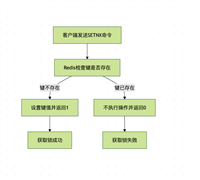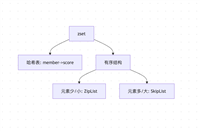场景一:控制表单重复提交
防重提交有很多方案,从前端的按钮置灰,到后端synchronize锁、lock锁、借助redis语法实现简单锁、redis+lua分布式锁、redisson分布式锁,再到db的悲观锁、乐观锁、借助表唯一索引等等都可以实现防重提交,以保证数据的安全性。
这篇文章我们介绍其中一种方案–借助redis语法实现简单锁,最终实现防重提交。
背景
我们项目中,为了控制表单重复提交问题,会在点击页面按钮(向后端发起业务请求)后就会置灰按钮,直到后端响应后解除按钮置灰。通过按钮置灰来防止重启提交问题。但postman、jmeter和其他服务调用(绕过前端页面)呢?所以后端接口也要根据控制表单重复提交的问题。
后端代码可以在2个位置做控制:
一是放在gateway网关做:
- 好处是只在一个地方加上控制代码,就可以控制所有接口的重复提交问题。
- 坏处是控制的范围太广(比如查询接口无需控制,控制了反而多余)、定义重复提交的时间段不能灵活调整。
二是放在aop切面做:
- 好处是只有需要的地方才会被控制(哪里需要引用一下自定义注解即可),另外也能灵活调整定义重复提交的时间段(自定义注解里定义时间字段开放给使用者填写)。
- 坏处是每个需要控制的地方都要加注解,会有侵入性和一定的工作量。
实现代码
1、添加自定义注解
package com.xxx.annotations;
import java.lang.annotation.*;
/**
* 自定义注解防止表单重复提交
*
* @author wanglingqiang
* @date 2023/9/6 10:11
*/
@target(elementtype.method)
@retention(retentionpolicy.runtime)
@documented
public @interface repeatsubmit {
/**
* 过期时间,单位毫秒
*/
long expiretime() default 500l;
}2、添加aop切面
package com.xxx.aop;
import com.xxx.annotations.repeatsubmit;
import com.xxx.exception.serviceexception;
import lombok.extern.slf4j.slf4j;
import org.aspectj.lang.proceedingjoinpoint;
import org.aspectj.lang.annotation.around;
import org.aspectj.lang.annotation.aspect;
import org.aspectj.lang.annotation.pointcut;
import org.aspectj.lang.reflect.methodsignature;
import org.springframework.data.redis.core.redistemplate;
import org.springframework.stereotype.component;
import org.springframework.web.context.request.requestcontextholder;
import org.springframework.web.context.request.servletrequestattributes;
import javax.annotation.resource;
import javax.servlet.http.httpservletrequest;
import java.lang.reflect.method;
import java.util.concurrent.timeunit;
/**
* 防止表单重复提交切面
*
* @author wanglingqiang
* @date 2023/9/6 10:13
*/
@slf4j
@aspect
@component
public class repeatsubmitaspect {
private static final string key_prefix = "repeat_submit:";
@resource
private redistemplate redistemplate;
@pointcut("@annotation(com.xxx.annotations.repeatsubmit)")
public void repeatsubmit() {}
@around("repeatsubmit()")
public object around(proceedingjoinpoint joinpoint) throws throwable {
//joinpoint获取方法对象
method method = ((methodsignature) joinpoint.getsignature()).getmethod();
//获取方法上的@repeatsubmit注解
repeatsubmit annotation = method.getannotation(repeatsubmit.class);
//获取httpservletrequest对象,以获取请求uri
servletrequestattributes requestattributes = (servletrequestattributes) requestcontextholder.getrequestattributes();
httpservletrequest request = requestattributes.getrequest();
string uri = request.getrequesturi();
//拼接redis的key,这里只是简单根据uri来判断是否重复提交。可以根据自己业务调整,比如根据用户id或者请求token等
string cachekey = key_prefix.concat(uri);
boolean flag = null;
try {
//借助setifabsent(),key不存在才能设值成功
flag = redistemplate.opsforvalue().setifabsent(cachekey, "", annotation.expiretime(), timeunit.milliseconds);
} catch (exception e) {
//如果redis不可用,则打印日志记录,但依然对请求放行
log.error("", e);
return joinpoint.proceed();
}
//redis可用的情况,如果flag=true说明单位时间内这是第一次请求,放行
if (flag) {
return joinpoint.proceed();
} else {
//进入else说明单位时间内进行了多次请求,则拦截请求并提示稍后重试
throw new serviceexception("系统繁忙,请稍后重试");
}
}
}这里利用redistemplate的setifabsent()实现的,如果存在就不能set成功,set的同时设置过期时间,可以是用使用默认,也可以自己根据业务调整。
另外,cachekey的定义,也可以根据自己的需要去调整,比如根据当前登录用户的userid、当前登录的token等。
3、使用
@slf4j
@restcontroller
@requestmapping("/user")
public class usercontroller {
@repeatsubmit
@postmapping
public ajaxresult add(@validated @requestbody sysuser user) {
//....
}
场景二:控制接口调用频率
背景
忘记密码后通过发送手机验证码找回密码的场景。因为每发一条短信都需要收费,所以要控制发短信的频率。
比如,同一个手机号在3分钟内只能发送3次短信,超过3次后则提示用户“短信发送过于频繁,请10分钟后再试”。
实现代码
@slf4j
@restcontroller
@requestmapping("/sms")
public class smscontroller {
@resource
private ismsservice smsservice;
@resource
public redistemplate redistemplate;
@postmapping("/sendvalidcode")
public result sendvalidcode(@requestbody @valid smsdto smsdto) {
//验证手机号格式
checkphonenumber(smsdto.getphonenumber());
//...其他验证
//拼接redis的key(key为手机号,以控制一个手机号有限时间内容发送的次数)
string cachekey = "sms:code:resetpwd:"+smsdto.getphonenumber();
//验证发送短信次数,超过则拦截(阈值是3次,超时时间是3分钟,重试时间是10分钟)
checksendcount(cachekey, threshold, timeout, retry_time);
return smsservice.sendmsg(smsdto);
}
/**
* 验证发送短信次数,超过则拦截
* 该方法用lua脚本替换实现更好
*/
private void checksendcount(string cachekey, long threshold, long timeout, string retrytime) {
//首先进方法就先+1
long count = redistemplate.opsforvalue().increment(cachekey);
//然后比较次数,是否超过阈值
if (count > threshold) {
//超过则设置过期时间为10分钟,并提示10分钟后重试
redistemplate.expire(cachekey, 10l, timeunit.minutes);
throw new serviceexception("短信发送过于频繁,请" + retrytime + "分钟后再试");
} else {
//没超过3次,则累加上这一次
redistemplate.expire(cachekey, timeout, timeunit.minutes);
}
}
}总结
以上为个人经验,希望能给大家一个参考,也希望大家多多支持代码网。







发表评论